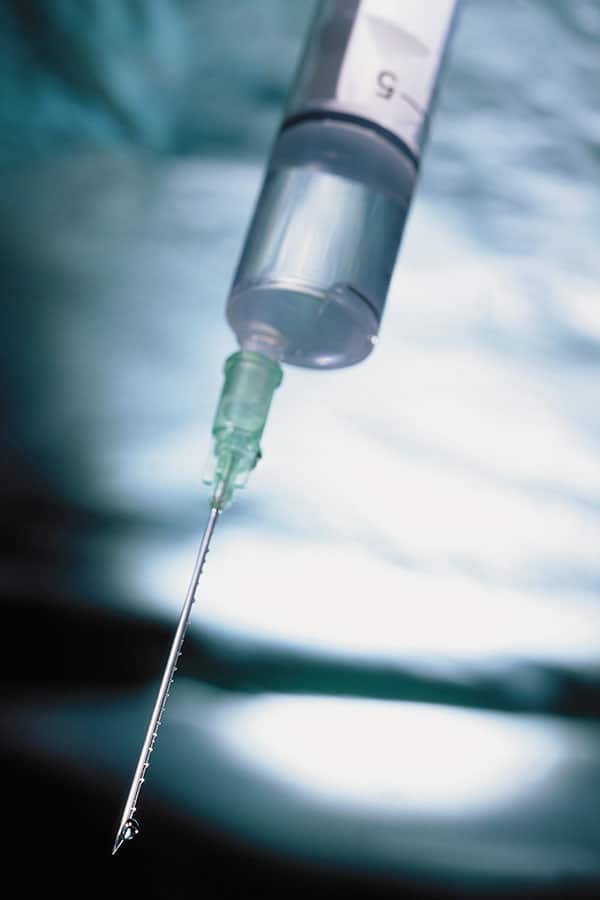High tensile strength after plasma treatment of Needle Hubs
Medical device manufacturer’s use Tantec PlasmaTEC-X systems for pretreatment of needle hubs to ensure adhesion.
Plasma nozzles treat needle hubs
Tantec delivered a plasma treatment solution for 11 lines for the production of needle hubs. To each of these lines, we provided two plasma nozzles to treat the needle hubs, before placing the needle. The Plasma nozzles treat 20 needle hubs per 1.4 seconds.
Plasma surface treatment improves bonding and prevents leakage
A plasma treatment chemically roughens the surface and allows it to “grab onto” the adhesives being applied. The resulting chemical bond that occurs with the surface
is superior than a simple mechanical bond.
By increasing the surface energy of needle hubs using a plasma treatment the bonding properties improves – thereby adding extra safety and reliability to the product.
The result of improved wettability is that the adhesive will spread evenly on the hub that connects to a stainless-steel cannula and thereby prevents fluids from leaking. The result of the strong bonding between adhesive and hub will ensure that the cannula will not move or release from the hub during use.
Traditional methods of assembling the needle resulted in limitations
Needle assembly is a unique challenge. The joint that connects a stainless-steel cannula to a plastic hub must be well sealed to prevent fluids, such as blood or medicine, from leaking. Only a high strength joining method will ensure that the cannula’s small and cylindrical joint will not move or release from the hub during use.
Historically, manufacturers have used a variety of methods to assemble disposable needles, such as moulding, welding, interlocking, or sealing. However, these methods have many limitations, such as being very time-consuming and expensive. For example, insert moulding requires extreme precision to ensure no leak paths are present when fixing the cannula to the plastic hub. To maintain the aesthetic appearance of the needle assembly during welding, great precision is required to hide or eliminate weld flashes. Similarly, mechanically interlocking the cannula to the hubs has limitations due to expense and resource requirements, while joint sealing poses even greater challenges.
Safer alternatives to needle designs required
The OSHA-driven Needlestick Safety and Prevention Act requires needle manufacturers to provide safer alternatives to existing needle designs, resulting in hundreds of new designs annually. In an attempt to comply with this act while remaining competitive in the marketplace, manufacturers are exploring the uses of adhesives to facilitate needle assembly.
A wide variety of medical devices incorporate a needle or cannula:
• Insulin syringes
• Hypodermic and angiographic needles
• Blood lancets
• Pre-packaged medical syringes
• Introducer catheters
• Intravenous sets
• Venous-winged and port-access infusion sets
• Blood collection sets.
Tantec Plasma treatment of needle hubs solves previous challenges
Tantec solutions for treatment of plastic needle hubs, solves the previously mentioned problems related to bonding and leakage. Treating the needle hub’s surface increases surface wettability and adhesion properties through electrical discharge.
Due to the treatment’s ability to achieve extremely high tensile strength, it has become one of the most common methods used to treat hub surfaces.
For example, untreated hubs present tensile strengths between 18-25N, whereas treated hubs achieve tensile strengths up to 75N.
Tantec develops customized solutions as integrated systems which ae designed to cope with the high speeds of high-performance needle assembly lines. The ability to treat difficult-to-reach hub recesses makes Tantec plasma treatment solutions easy to use and safe treatment solution for needle hubs.

